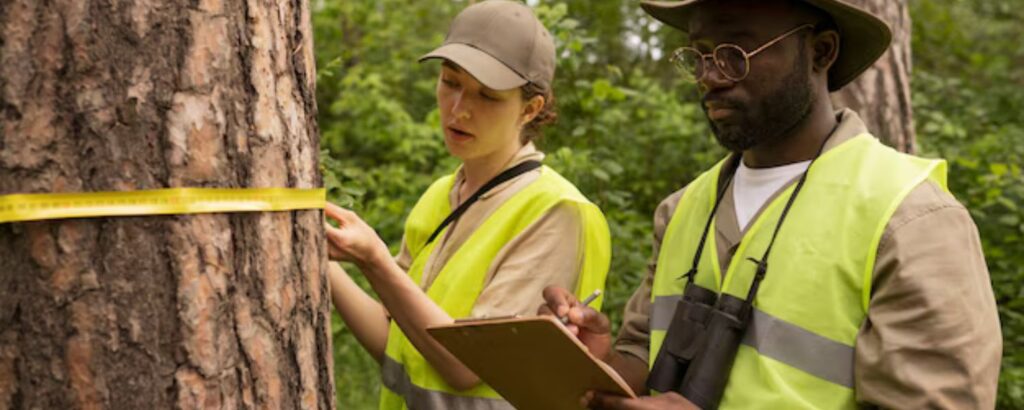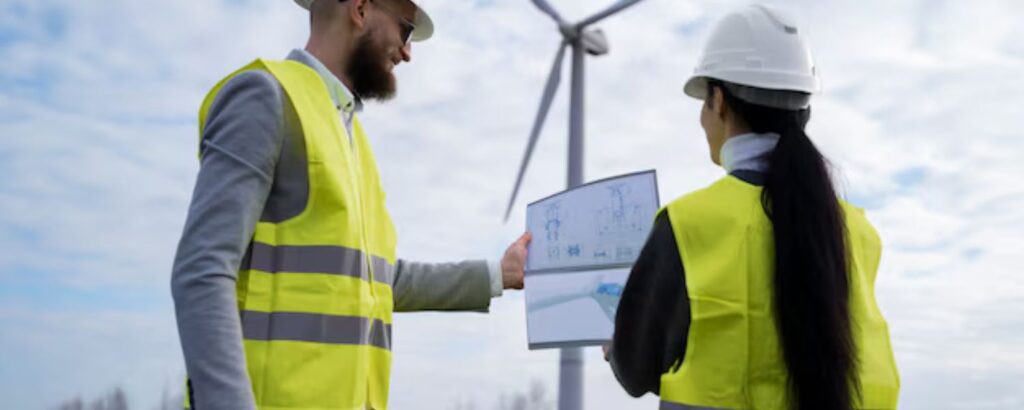Climate change is one of the most pressing issues of our time, influencing every aspect of our environment and society. Addressing this challenge requires a comprehensive approach, and one critical component of this approach is environmental monitoring. By continuously observing and analyzing various environmental parameters, we can better understand the impacts of climate change and develop effective strategies for mitigation.
This article explores the role of environmental monitoring in climate change mitigation, detailing its objectives, techniques, applications, and significance in the broader context of sustainability.
What Is Environmental Monitoring?

Environmental monitoring refers to the systematic collection, analysis, and interpretation of data related to environmental conditions. This process involves measuring various parameters such as air quality, water quality, soil health, noise levels, and waste management to assess the state of the environment and detect changes over time.
What Does Environmental Monitoring Mean?

Environmental monitoring is about gathering information that helps us understand how different environmental factors are evolving. This can include tracking pollution levels, assessing ecosystems’ health, and evaluating environmental policies’ effectiveness. By monitoring these factors, we can identify trends, predict potential problems, and take action to address issues before they escalate.
Objectives of Environmental Monitoring

The primary objectives of environmental monitoring include:
1. Detecting Changes
Identifying and measuring changes in environmental conditions to understand trends and patterns.
2. Assessing Impact
Evaluating the impact of human activities, such as industrial operations or urban development, on the environment.
3. Regulating Compliance
Ensuring that various industries and activities are meeting environmental regulations and standards.
4. Supporting Decision-Making
Providing data that helps policymakers, businesses, and organizations make informed decisions about environmental protection and management.
5. Promoting Public Awareness
Raising awareness about environmental issues and encouraging public participation in industrial sustainability efforts.
Techniques of Environmental Scanning and Monitoring

Various techniques are employed in environmental scanning and monitoring to gather accurate and comprehensive data:
1. Remote Sensing
Utilizing satellite imagery and aerial photography to monitor large-scale environmental changes and assess land use, vegetation, and water bodies.
2. On-site monitoring
This is the direct measurement of environmental parameters using sensors and instruments placed at specific locations, such as air quality sensors or water quality probes.
3. Sampling and Laboratory Analysis
Collecting samples of air, water, soil, or waste and analyzing them in laboratories to determine their chemical and physical properties.
4. Data Logging and Analysis
Using electronic devices to record environmental data over time, which is then analyzed to identify trends and anomalies.
5. Modeling and Simulation
Applying mathematical models and simulations to predict future environmental conditions based on current data and historical trends.
Examples of Environmental Monitoring Systems

There are various environmental monitoring systems designed to address specific environmental needs. Some examples include:
1. Air Quality Monitoring Systems
These systems measure pollutants such as particulate matter (PM), nitrogen dioxide (NO2), sulfur dioxide (SO2), and carbon monoxide (CO) to assess air quality and public health risks.
2. Water Quality Monitoring Systems
These systems track parameters such as pH, dissolved oxygen, turbidity, and contaminants in water bodies to ensure safe drinking water and protect aquatic ecosystems.
3. Soil Monitoring Systems
These systems evaluate soil properties, including nutrient levels, moisture content, and contamination, to support agricultural practices and land management.
4. Noise Monitoring Systems
These systems measure noise levels in various environments, such as urban areas or industrial sites, to assess noise pollution and its impact on human health and wildlife.
Why Is Environmental Monitoring Important?

Environmental monitoring is crucial for several reasons:
1. Early Detection of Issues
Monitoring helps identify environmental problems early, allowing for timely intervention and mitigation before issues become severe.
2. Informed Decision-Making
Accurate data from monitoring programs supports informed decision-making by providing evidence on environmental conditions and impacts.
3. Regulatory Compliance
Ensures that industries and activities adhere to environmental regulations and standards, preventing violations and promoting sustainability.
4. Public Health Protection
Monitoring air, water, and soil quality helps protect public health by identifying and addressing potential hazards and pollutants.
5. Ecosystem Protection
Helps track changes in ecosystems and biodiversity, enabling conservation efforts to preserve natural habitats and species.
Environmental Monitoring Applications

Environmental monitoring has a wide range of applications, including:
1. Climate Change Research
Monitoring environmental parameters helps scientists understand the impacts of climate change on various ecosystems and develop strategies for adaptation and mitigation.
2. Industrial Sustainability
Industrial sustainability efforts rely on monitoring to manage environmental impacts, optimize resource use, and reduce waste.
3. Sustainable Logistics
In sustainable logistics, monitoring is used to assess the environmental impact of transportation and supply chain activities, aiming to minimize carbon footprints.
4. Urban Planning
Monitoring data supports urban planning by providing insights into pollution levels, land use, and resource needs, helping create more sustainable and livable cities.
5. Disaster Management
Environmental monitoring aids in disaster preparedness and response by tracking weather patterns, natural hazards, and environmental conditions.
Types of Environmental Monitoring

There are several types of environmental monitoring focusing on different aspects of the environment:
1. Air/Atmospheric Monitoring
Measures air quality, including pollutants like ozone, particulate matter, and greenhouse gasses. It is essential for assessing air pollution, public health risks, and climate change impacts.
2. Soil Monitoring
Evaluates soil quality, including nutrient levels, contamination, and erosion. It supports agricultural practices, land use planning, and environmental conservation.
3. Water Monitoring
Assesses water quality in rivers, lakes, and oceans, measuring parameters such as pH, temperature, and contaminants. It ensures safe drinking water, protects aquatic life, and supports water resource management.
4. Waste Monitoring
Tracks the generation, disposal, and management of waste, including solid, liquid, and hazardous waste. It helps in waste reduction, recycling efforts, and regulatory compliance.
5. Noise Monitoring
Measures noise levels in various environments to assess noise pollution and its impact on human health and wildlife. It supports noise regulation and mitigation strategies.
Conclusion
Environmental monitoring plays a vital role in climate change mitigation by providing essential data that helps us understand and address environmental challenges. By employing various techniques and systems, we can track changes, assess impacts, and make informed decisions to protect our environment.
Whether through data center environmental monitoring, environmental monitoring systems, or advanced environmental monitoring, the insights gained from these efforts are crucial for fostering sustainable technology, industrial sustainability, and overall environmental well-being. Investing in environmental monitoring programs and environmental monitoring solutions is essential for a healthier planet and a more sustainable future.
VectorGlobe is a key player in the advancement of environmental monitoring. Organizations can proactively manage environmental issues, maintain regulatory compliance, and confidently make educated choices when they use VectorGlobe’s comprehensive solutions.
In addition to assisting sustainability initiatives, the company’s dedication to precise and effective monitoring gives enterprises the tools they need to safeguard and maintain the environment successfully.

